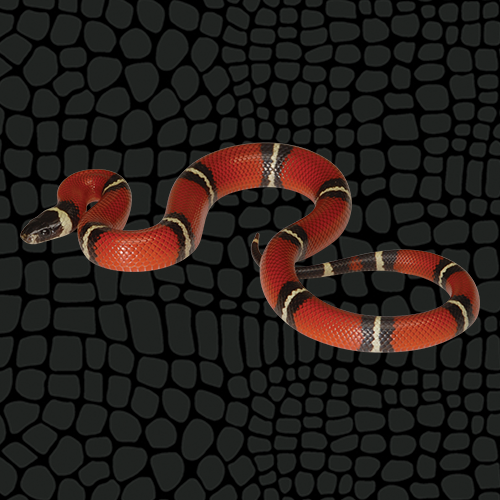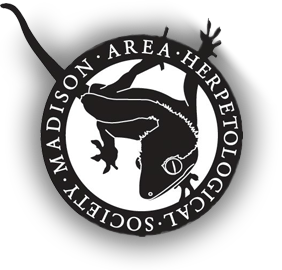Milk Snake
Amazing Mimicry
There are currently 24 recognized subspecies of Milk Snakes. Each of them differ in color and pattern but most contain a mixture of red, black, orange, and yellow rings. With the exception of the Eastern Milk Snake, which resembles the venomous Massassauka Rattlesnake, the colors and pattern mimic the venomous Coral Snakes found throughout the regions where they come from. Milk Snakes range from southeastern Canada through most of the United States and Central America, all the way down to northern Venezuela in South America. These beautiful snakes get their name from erroneous stories about them sneaking into barns to drink milk from cows. Even though they are often found in barns, they are usually there hunting the rodents that are eating the cow’s grain.
Habitat
Milk Snakes are found across North American and northern South America. They can be found in a range of habitats from open prairies to tropical forests. Many of the species available in captivity, such as the Honduran Milk Snake, come from tropical areas where they live at low to mid level elevations and spend a lot of their time hiding and hunting through the leaf litter on the rainforest floor. Others, like the Sinaloan Milk Snake, live in arid and rocky semi –desert regions where they are often found hiding under rocks or in rock crevices.
Housing
Housing must be sealed and escape proof. Hatchling Milk Snakes can be housed in a 10 gallon Zilla Critter Cage. Adult Milk Snakes should be housed in a 40BR Zilla Critter Cage. Check out similar sizes of Zilla Front Opening Terrariums for an easy access habitat option. Since these snakes like to burrow and hide, Zilla Lizard Litter and Zilla Bark Blend make a great substrate. If you have a species that needs more humidity, use Zilla Jungle Mix. Decorate the terrarium with a Zilla Rock Lair for a secure humid hide, artificial foliage, logs and branches for basking and hiding, and a Zilla Terraced Dish for fresh water.
Temperature and Humidity
It is important to create a thermal gradient (or a warm side and cool side) in the cage/enclosure. This can be done with an appropriate sized Zilla Heat Mat adhered to the bottom of the tank on one side and add proper lighting. Ideal temperatures for Milk Snakes range from 75-82°F on the cool side and 80-85°F on the warm side. Provide an 88-92°F basking area on the warm side. Using a Zilla Low Profile Dual Fixture with a Zilla 50W Mini Halogen bulb and a Zilla Desert Mini Compact Fluorescent UVB Bulb will provide the correct heat and UV for your Milk Snake to thrive. While Milk Snakes don’t need UVB to survive, UVA/UVB light has been shown to greatly improve the immune system, health and wellness of all reptiles, both diurnal and crepuscular. Make sure to place the light over the side with the heat mat to help create that warm side of the thermal gradient. Spot clean the enclosure for urates and feces once a week and every 3 months remove all substrate and clean in order to disinfect the tank and décor.
Feeding and Diet
In the wild, milk snakes will prey upon small animals like rodents, small birds, bird eggs and occasionally other snakes. Hatchlings and juveniles will sometimes feed on frogs or small lizards. Most hatchlings can be started off on pinkie mice every 3-5 days. Food items can gradually be increased as needed. Most adult Milk Snakes can be fed adult mice to small adult rats once every 5-7 days. A general rule of thumb to follow when feeding snakes is to provide prey items that are approximately the same width as the widest point of the snake. When possible, try to get the snake to eat frozen thawed rodents. It’s safer for the snake and easier to keep a larger quantity on hand for weekly feeding.
Handling
As with many snakes, hatchling and juvenile milk snakes may initially be nervous and defensive. They may rattle their tails, musk, defecate or bite when alarmed. Handle your milk snake gently and deliberately taking care not to drop or injure the animal. Many milk snakes will become more tolerant and accustomed to handling as they become older.
Also be sure to wash your hands after handling any reptiles.


